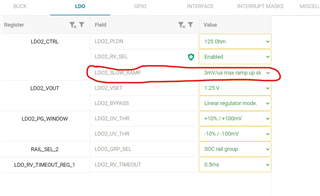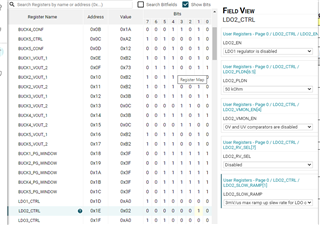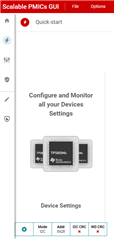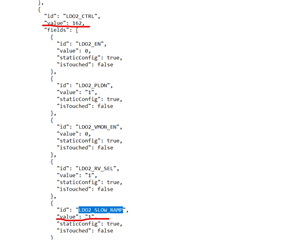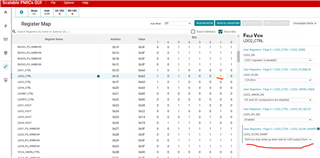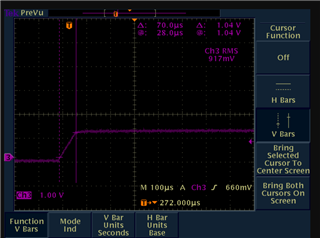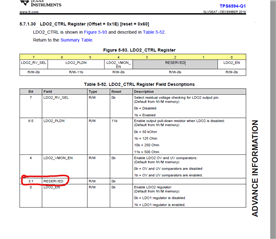hi, all:
I want to set TPS6594EVM "LDO-2 SLOW RAMP" as 3mv/us, but I don't find which register can be set in the datasheet for "LDO2_CTRL", could you tell me which register can I set?
and I want to set by the GUI, it is still fail. but if I change "LDO2 VOUT" voltage from 1.25V to 2.7V, it is ok. just like only SLOW RAMP register can not be set.
thanks
